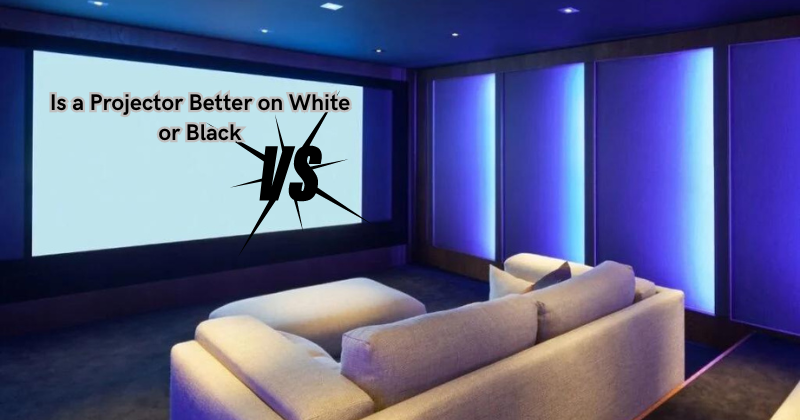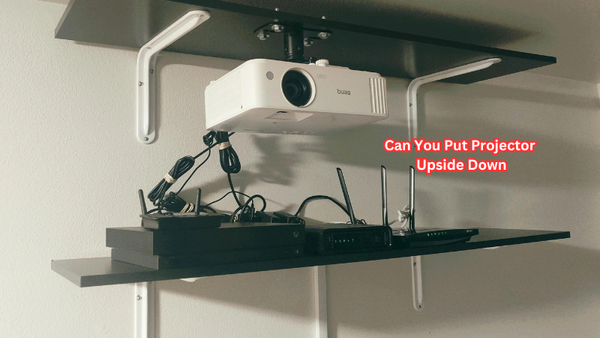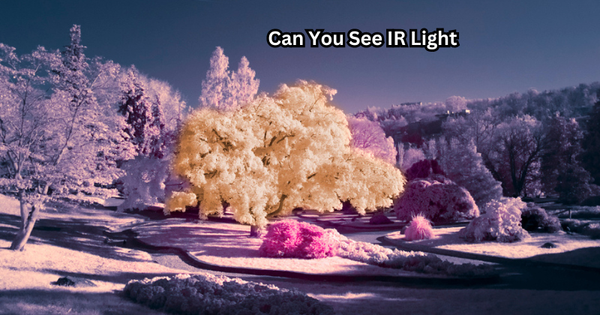Choosing a suitable projection surface is crucial for optimizing visual experiences with projectors. The age-old debate revolves around whether a projector is better suited for a white or black background. Each option presents unique advantages. White surfaces reflect light efficiently, resulting in brighter and more vibrant images. This makes white screens ideal for well-lit environments.
On the other hand, black surfaces enhance contrast, providing deeper blacks and crisper details in darker settings. The decision ultimately hinges on the intended use and environmental conditions. Let's delve into the nuances of white and black projector screens to unravel the superior choice for your specific needs.
What Is White Projector Screens?
White projector screens are the most commonly used projection surfaces. They come in various materials, including vinyl, fiberglass, and PVC. The material is treated with layers of paint to reflect light evenly across the entire surface. White screens have high gain levels, which refers to how much light they can reflect to the viewer.
The higher the gain level, the brighter the projected image will appear. The typical gain level for white screens ranges from 1.0 to 2.5, with 1.0 being the standard and most common choice. This means that a white projector screen with a gain level of 1.0 reflects the same amount of light as a flat white surface. Screens with higher gain levels are best for larger venues or outdoor settings where ambient light may be an issue.
What Is Black Projector Screens?
Black projector screens, also known as high-contrast screens, are designed to enhance the contrast ratio of a projected image. The material is typically made of a dark grey or black fabric that absorbs ambient light rather than reflecting it. This results in deeper blacks and richer colors, making them ideal for darker environments such as home theaters or gaming rooms.
In addition to enhancing contrast, black projector screens reduce glare and improve overall image sharpness. The dark surface eliminates any potential reflections or "hot spots" that may appear on a white screen. However, it's worth noting that black screens have lower gain levels, typically ranging from 0.8 to 1.4, which means they may not be as bright as white screens in well-lit environments.
Is a Projector Better on White or Black?
The answer to this question ultimately depends on your specific needs and the environment in which you plan to use the projector. For well-lit environments with ample ambient light, a white screen may be the better choice for its ability to reflect light and enhance brightness.
However, in darker settings or where contrast is crucial, a black screen may be the way to go for its ability to absorb ambient light and create richer colors and sharper details. Plus, black screens are generally more expensive than white ones and may not be compatible with all projectors.
Black Projector Screen vs. White: What's the Difference?
Deciding between a black and white projector screen hinges on your particular requirements and the environment in which you plan to use it. If you are uncertain whether to opt for a black or white screen for your projector, fret not.
Let's dissect the comparison to assist you in making a well-informed decision regarding a black or white projector screen.
Contrast and Color Reproduction:
Black Screen: As mentioned earlier, black screens are designed to absorb ambient light, resulting in a higher contrast ratio. This means that the blacks on the screen will appear darker and more defined, allowing for better detail and color reproduction in dark scenes.
White Screen: White screens reflect light efficiently, creating brighter images with vibrant colors. However, this can also lead to washed-out colors in darker environments.
Ambient Light Reflection:
Black Screen: Black screens are designed to absorb ambient light, making them ideal for use in well-lit environments. This results in minimal external light interference and a more focused projected image.
White Screen: White screens reflect all light sources, including ambient light. While this can be beneficial in brighter settings, it can also cause contrast and color accuracy issues in darker environments.
Viewing Angle:
Black Screen: Due to their specialized materials, black screens have a narrower viewing angle than white screens. This means the projected image may not be as visible from extreme angles or if the viewer is sitting off-center.
White Screen: White screens provide a wider viewing angle, ensuring that the projected image is visible from various positions in the room.
Compatibility:
Black Screen: Black screens are typically designed for DLP projectors, so they may not be compatible with LCD projectors. This can limit your options when it comes to choosing a projector.
White Screen: White screens are versatile and can work with both LCD and DLP projectors, giving you more flexibility in your projector choices.
Price and Affordability:
Black Screen: Black screens tend to be more expensive compared to white screens, primarily due to the specialized materials used in their construction. Plus, their limited compatibility can also make them a less affordable option for some users.
White Screen: White screens are generally more budget-friendly compared to black screens. They also offer a wider range of options in terms of price and quality. But keep in mind that higher-quality white screens may still be pricier than lower-end black screens.
These are the main differences between black and white projector screens, and as you can see, there is no clear winner. It all comes down to your specific needs and preferences. Consider the environment in which you plan to use the screen, the level of ambient light present, and your projected image quality requirements before making a decision.
Is a Projector on a Black Wall Better?
Another option to consider is simply using a black wall as your projector screen. This can essentially achieve the same effect as a black projector screen by absorbing ambient light and increasing contrast. However, it may not be as effective as a specialized black screen. It may require some additional preparation, such as painting the wall with special reflective paint or adding blackout curtains to control external light sources.
Plus, a black wall may not provide the same image sharpness and color accuracy as a dedicated black projector screen. Ultimately, weighing the pros and cons may be best and deciding which option will work best for your specific needs.
Advantages and Disadvantages of Black Projector Screens
To summarize, here are the main advantages and disadvantages of black projector screens:
Advantages:
- Higher contrast ratio resulting in better detail and color reproduction
- Minimal ambient light interference for a more focused projected image
- Ideal for use in well-lit environments
Disadvantages:
- Limited compatibility with certain types of projectors
- Narrow viewing angle compared to white screens
- More expensive than white screens
Advantages and Disadvantages of White Projector Screens
And here are the main advantages and disadvantages of white projector screens:
Advantages:
- Brighter images with vibrant colors
- Versatile compatibility with both LCD and DLP projectors
- Wider viewing angle for a more visible projected image
- More budget-friendly option
Disadvantages:
- Washed-out colors in darker environments
- More external light interference
- Lower contrast ratio compared to black screens
With this information, you should now better understand the key differences between black and white projector screens, as well as their respective advantages and disadvantages. Choosing a black or white screen will ultimately depend on your preferences and specific requirements. So go ahead, make an informed decision, and enjoy your movie nights or presentations with the perfect projector screen for your needs!
Maintenance Tips for Projector Screens
No matter which type of projector screen you choose, proper maintenance is essential to ensure optimal performance and longevity. Here are a few tips to keep in mind:
- Regularly clean the screen with a soft, lint-free cloth to remove dust or debris.
- Avoid using harsh chemicals or abrasive materials when cleaning the screen.
- Store the screen in a protective case or cover when not in use.
- Check for any tears or damage to the screen and repair as needed.
- Use caution when setting up and taking down the screen to avoid bending or damaging it.
By following these maintenance tips, you can ensure that your projector screen continues to provide high-quality images for years to come.
FAQs
What color material is best for a projector screen?
There is no one "best" color for a projector screen as it largely depends on the environment and personal preference. White screens are generally more versatile and budget-friendly, while black screens offer higher contrast and minimal light interference. It's important to consider your specific needs and preferences when choosing a projector screen color.
Do projectors work on black walls?
Yes, projectors can work on black walls by utilizing the wall as a makeshift black screen. However, this may not be as effective as using a dedicated black projector screen and may require additional preparations, such as painting the wall or adding blackout curtains.
Is a gray screen good for a projector?
Gray screens are a mid-point between black and white screens, offering some of the benefits of both. They can be a good option for areas with moderate ambient light and can improve contrast and color accuracy.
How dark should it be for a projector?
The optimal level of darkness for a projector will depend on the specific type and quality of the screen, as well as personal preference. Generally, lower ambient light will result in better image quality, but it's important to find a balance that works for your specific setup.
Conclusion
In conclusion, choosing between a white or black surface for a projector ultimately depends on the specific context and personal preferences. White surfaces are generally favored for their ability to reflect light evenly, resulting in brighter, more vibrant images with better color accuracy and contrast. This makes them ideal for well-lit environments or when precise image reproduction is desired.
On the other hand, black surfaces can enhance contrast by absorbing ambient light and minimizing reflection, making them suitable for darker rooms or when projecting in low-light conditions. It's important to consider factors such as ambient lighting, room size, and intended use when deciding between white and black surfaces.
Ultimately, the goal is to achieve optimal image quality and viewing experience, so experimenting with both options may be necessary to determine which works best for individual needs.





